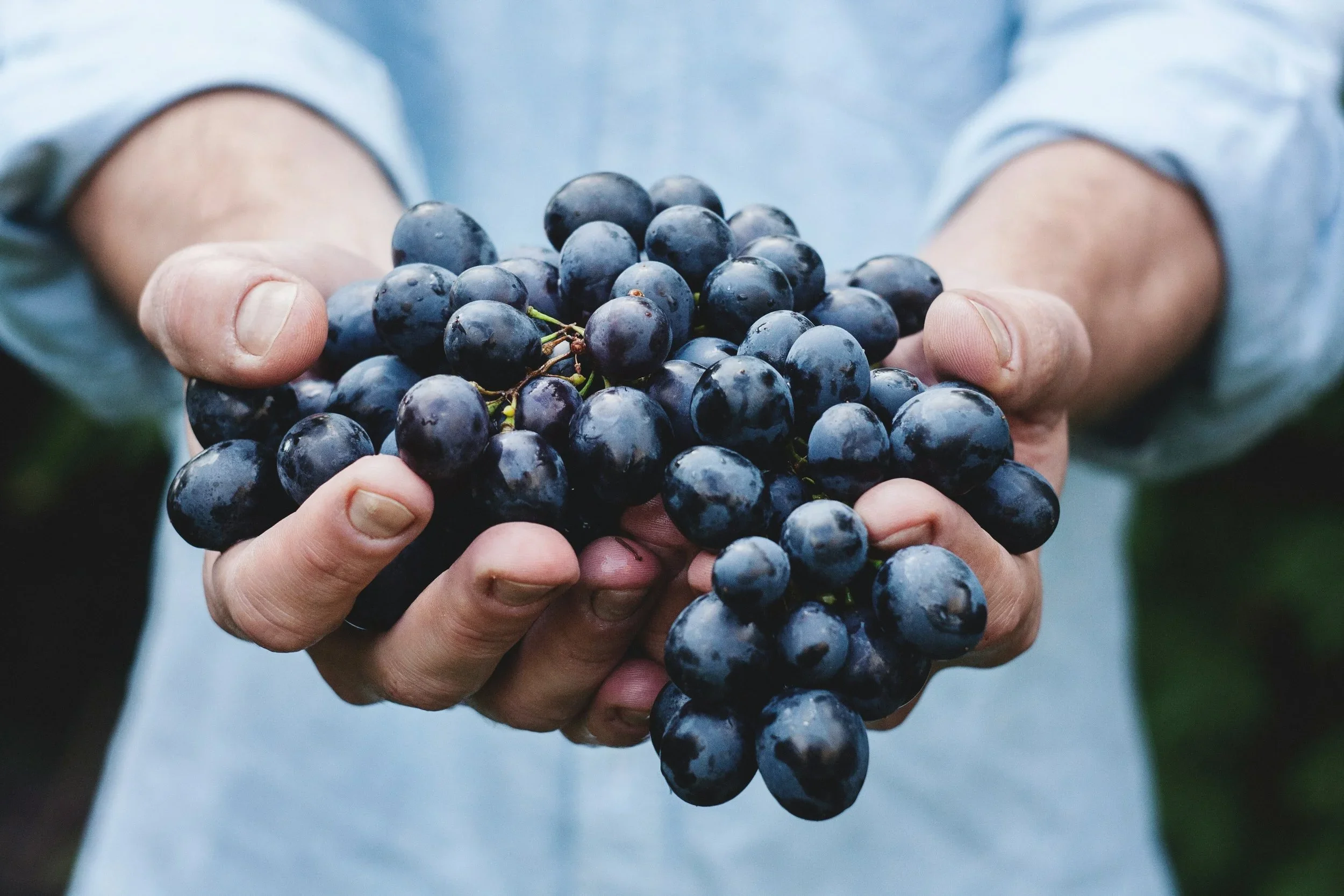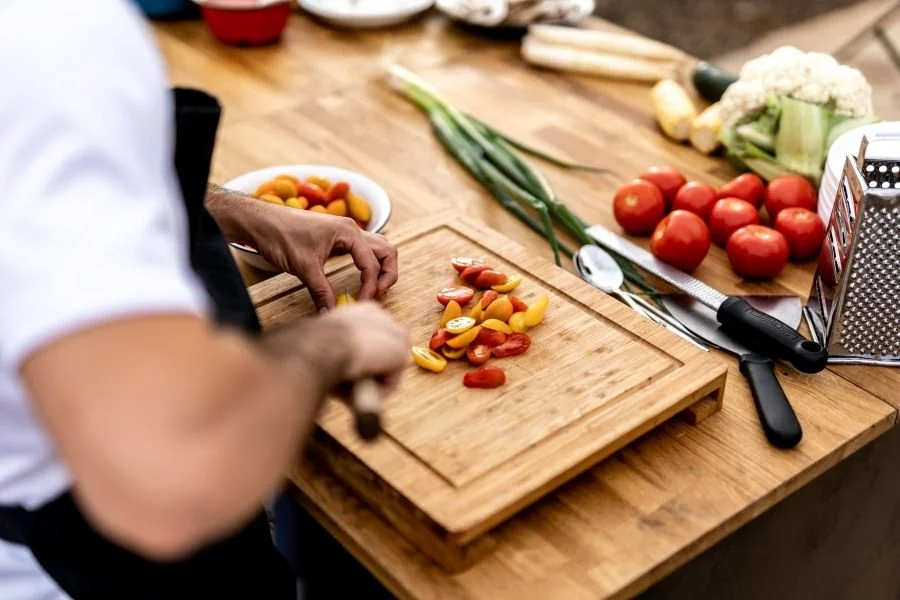The Differences Between The Different Regions Of Italy
/Thinking of doing business in Italy? Considering a trip to the area? It’s always useful to know more about its many stunning regions and what they have to offer.
Italy is a beautiful, varied country full of friendly and warm people, incredible cuisine, phenomenal coffee and a rich history and culture.
If you were to trace the history of the Italian language, it originally came from Latin, the official language of the Roman Empire. Because of this, it’s considered by many linguistic experts as part of the Romance language family, like French, Romanian, Portuguese, and Spanish. According to native Italian translators, another unique aspect of the Italian language is that it’s considered “the music language” due to its inherently highly expressive and melodic nature. Not only that, but the Italian language is influential in artistic fields like opera.
Within the country are many different regions that each have something different to offer. They all have their own history, and some even have their own dialects. Let’s take a closer look.
Credit: Unsplash.
Abruzzo
Abruzzo is East of Rome and has a coastline on the Adriatic Sea, whilst also containing mountainous regions with the Apennines. It’s a favourite region with nature lovers because it has so many incredible nature reserves.
Aosta Valley
Aosta valley borders on France and Switzerland and is most known for the incredible Western Alps within the area. Ski lovers really appreciate the fantastic ski resorts in the region.
The Valle d'Aosta in Italian, is a region located in the northwest of Italy. It is bordered by France to the west and Switzerland to the north. The Aosta Valley is known for its stunning mountain landscapes, rich history, charming Alpine villages, and outdoor recreational opportunities.
The region is dominated by the magnificent peaks of the Alps, including the iconic Matterhorn (Cervino) and Monte Rosa. As such, the Aosta Valley is a popular destination for outdoor enthusiasts, offering activities such as hiking, mountaineering, skiing, snowboarding, and paragliding. The region boasts several world-class ski resorts, including Courmayeur, Cervinia, and La Thuile.
The Aosta Valley is also home to the Gran Paradiso National Park, Italy's oldest national park. This protected area is renowned for its diverse wildlife, pristine alpine landscapes, and opportunities for hiking and wildlife spotting.
The regional capital, Aosta, is a charming town with a rich history. It showcases Roman ruins, medieval architecture, and a well-preserved city wall. Notable landmarks include the Arch of Augustus, the Roman Theater, and the Aosta Cathedral. The town also hosts the annual Sant'Orso Fair, a traditional crafts fair dating back over 1,000 years.
The Aosta Valley has a distinct culture and linguistic heritage. The local language, Valdôtain, is a Franco-Provençal dialect, reflecting the region's historical ties with both France and Italy. The region has preserved its traditions and customs, which are often showcased during festivals and events throughout the year.
Cuisine in the Aosta Valley is hearty and flavorful, influenced by both Italian and French culinary traditions. Local specialties include fontina cheese, lard d'Arnad (cured pork fat), polenta, and various meat dishes such as carbonada (beef stew). The region is also known for its excellent wines, including reds made from the Nebbiolo and Petit Rouge grape varieties.
The Aosta Valley is well-connected by road and rail, and it can be reached easily from major cities in Italy and neighboring countries. The region's small size allows for convenient exploration and the ability to visit multiple attractions in a relatively short time.
The Aosta Valley offers a blend of breathtaking mountain scenery, rich history, cultural heritage, and outdoor adventures. Whether you're exploring the historic town of Aosta, skiing in world-class resorts, or immersing yourself in nature in the national park, the Aosta Valley provides a captivating experience for visitors.
Apulia
Apulia is an incredibly stunning part of Italy with stone towns painted in white, and gorgeous old Italian farms throughout the countryside. Holidaymakers enjoy visiting Apulia for its beautiful Mediterranean beaches.
Apulia, also known as Puglia in Italian, is a region located in southern Italy. It forms the "heel" of the Italian boot, bordering the Adriatic Sea to the east and the Ionian Sea to the southeast. Apulia is known for its beautiful coastline, historical towns, unique architecture, and rich culinary traditions.
The region's coastline stretches for hundreds of kilometers, offering a diverse range of landscapes. From sandy beaches and crystal-clear waters to rugged cliffs and hidden coves, Apulia has something to suit every beach lover's taste. Some popular coastal destinations include the Gargano Peninsula, Salento Peninsula, and the stunning town of Polignano a Mare, famous for its dramatic cliffside location.
Apulia is also known for its charming towns and cities, each with its own character and historical significance. Bari, the regional capital, is a bustling port city with a historic center (Bari Vecchia) characterized by narrow alleyways, charming squares, and the imposing Basilica of San Nicola. Lecce is renowned for its Baroque architecture, earning it the nickname "Florence of the South." The trulli houses of Alberobello, a UNESCO World Heritage Site, are unique cone-shaped structures that have become iconic symbols of the region.
The cuisine of Apulia is diverse and deeply rooted in tradition. Olive oil production is a significant part of the region's economy, and the local olive oil is highly prized. Apulian cuisine features fresh seafood, homemade pasta, and hearty dishes like orecchiette with broccoli rabe, frisella (hard, twice-baked bread) with tomatoes, and grilled or oven-baked meats. The region is also known for its excellent wines, including Primitivo and Negroamaro.
Apulia has a rich historical and cultural heritage. It has been influenced by various civilizations throughout history, including the Greeks, Romans, Normans, and Byzantines. There are many archaeological sites, castles, and cathedrals that testify to the region's rich past. Matera, located in the neighboring region of Basilicata, is a UNESCO World Heritage Site famous for its ancient cave dwellings (Sassi di Matera) that date back thousands of years.
Apulia is easily accessible by air, with international airports in Bari and Brindisi, as well as by train and road connections from other parts of Italy.
This area offers a combination of beautiful beaches, fascinating history, unique architecture, and delicious cuisine. Whether you're exploring the coastal towns, enjoying the local gastronomy, or delving into the region's rich cultural heritage, Apulia offers a diverse and captivating experience for visitors.
Basilicata
In contrast to the more coastal regions of Italy, Basilicata is incredibly rich with trees and mountains. It has some really interesting historical areas too, including Sassi in Matera, which contains old caves dating back thousands of years.
Credit: Unsplash. Matera.
Calabria (Regional Language Neapolitan-Calabrese)
Calabria is a stunning Italian region with a hot climate, beautiful beaches and gorgeous, quaint villages. It has its own regional language, which is important to consider if you are marketing to the area. Any voice over services or subtitles would need to take the regional language of Neapolitan-Calabrese into account.
Campiana (Regional Language - Neapolitan-Calabrese)
History fans love Campiana as a holiday destination because it has so many stunning historical ruins to explore. The landscape in Campiana is also incredibly famous because of Mt.Vesuvius remains and the stunning blue natural waters of Golfo Di Napoli.
Emilia-Romagna
Emilia-Romagna is one of the most wealthy areas of Italy. It sits between the Po River and the Reggiano Apennine mountains and has been most recently a growing holiday destination for foodies who love the various gastronomic treats on offer in the area.
Friuli-Venezia Giulia
This region sits between Austria, Slovenia and the Adriatic Sea. It has anything a holidaymaker could want when it comes to landscapes including; mountains, valleys and vineyards, and of course, the coastline on the Adriatic Sea.
Latium (Lazio)
This central area of Italy holds Rome within its parameters, making it an iconic part of Italy, and a favourite with tourists.
Liguria (Regional Language- Ligurian)
The home of the Italian Riviera, Liguria has stunning beaches, vibrant fishing villages and some delicious gastronomic delights.
Credit: Unsplash. Milan.
Lombardy (Regional Language - Lombard)
Lombardy is quite the fashionable region of Italy because of its chic city, Milan. It holds a huge range of fashion boutiques, shops, restaurants and stunning architecture too.
Known as Lombardia in Italian, this is a region located in northern Italy. It is one of the country's most populous and economically prosperous regions. Lombardy is known for its vibrant cities, historic sites, picturesque lakes, and rich cultural heritage.
Milan, the capital of Lombardy, is a global fashion and design capital and a major international business hub. The city boasts impressive landmarks such as the magnificent Milan Cathedral (Duomo di Milano), the famous opera house La Scala, and the historic Sforza Castle. Milan is also renowned for its high-end shopping districts, including the prestigious fashion street Via Montenapoleone.
Lombardy is home to several other notable cities, each with its own charm and attractions. Bergamo, with its historic upper town (Città Alta) and well-preserved Venetian walls, offers stunning views of the surrounding area. Brescia boasts an impressive Roman heritage, including the UNESCO-listed archaeological site of the Capitoline Temple. The city of Mantua (Mantova) is known for its Renaissance architecture and is listed as a UNESCO World Heritage Site.
The region is blessed with beautiful lakes, including Lake Como, Lake Garda, and Lake Maggiore. These lakes are surrounded by picturesque landscapes, charming towns, and luxurious villas. Lake Como, in particular, is famous for its elegant resorts, stunning villas, and breathtaking views.
Lombardy is also known for its rich cultural and artistic heritage. The region houses numerous museums, art galleries, and historical sites. The Last Supper by Leonardo da Vinci, located in Milan's Santa Maria delle Grazie, is one of the most renowned masterpieces in the world.
Cuisine in Lombardy is diverse and delicious, featuring a mix of traditional Italian dishes and regional specialties. Risotto alla Milanese (saffron-infused risotto), ossobuco (braised veal shanks), and panettone (a sweet bread) are some of the iconic dishes from the region. Lombardy is also famous for its cheeses, such as gorgonzola and taleggio, and its wines, including Franciacorta sparkling wine and the red wines of Valtellina.
Lombardy is well-connected by transportation networks, including international airports and an extensive rail system. The region serves as a gateway to other parts of Italy and offers easy access to neighboring countries.
Lombardy is a region that seamlessly blends historical treasures, cosmopolitan cities, stunning lakes, and culinary delights. Whether you're exploring the cultural sites of Milan, enjoying the beauty of the lakes, or savoring the region's gastronomy, Lombardy offers a diverse and enriching experience for visitors.
Marche
Le Marche is a beautiful mixture of countryside, mountains, and the Adriatic Sea. It’s a hilly region, with many a medieval town to explore.
The Marche is located in central Italy along the Adriatic coast. It is bordered by Emilia-Romagna to the north, Tuscany to the northwest, Umbria to the southwest, and Lazio to the south.
The Marche region is known for its diverse landscapes, ranging from the Apennine Mountains to rolling hills and the picturesque Adriatic coastline. It offers a combination of natural beauty, historical sites, and cultural treasures.
One of the region's highlights is its charming medieval towns and cities. Urbino, a UNESCO World Heritage site, is renowned for its well-preserved Renaissance architecture and its Ducal Palace, which houses an important art collection. Ascoli Piceno, another notable city, features a beautiful historic center with its main square, Piazza del Popolo, adorned with elegant Renaissance buildings.
The Marche region also boasts a rich cultural heritage. It has a long history of art and craftsmanship, particularly in fields such as ceramics, textiles, and paper production. The region hosts numerous festivals, exhibitions, and events throughout the year, celebrating its artistic and cultural traditions.
In addition to its cultural attractions, the Marche region offers opportunities for outdoor activities. The rugged Apennine Mountains are ideal for hiking, skiing, and exploring nature. The coastline offers sandy beaches, seaside resorts, and charming fishing villages.
The Marche region takes pride in its culinary delights, which include regional specialties such as brodetto (a fish stew), vincisgrassi (a type of lasagna), and ciauscolo (a spreadable salami). The region is also known for its high-quality wines, such as Verdicchio and Rosso Conero.
Overall, the Marche region of Italy offers a captivating blend of natural beauty, cultural heritage, and culinary delights, making it a fascinating destination for travelers seeking an authentic Italian experience.
Molise
A mountainous region, Molise sits on the Adriatic Sea and has lots of pretty churches and castles, as well as natural parks and landscapes.
Molise is a small area located in southern Italy. It is bordered by the Abruzzo region to the north, the Apulia region to the east, and the Lazio region to the west. Despite its small size, Molise has its own unique charm and character.
Molise is known for its unspoiled landscapes, with mountains, hills, and picturesque countryside. The region is largely rural and offers a tranquil atmosphere for those seeking a slower pace of life. The Apennine Mountains traverse the region, providing opportunities for outdoor activities such as hiking, skiing, and exploring nature.
The region is dotted with charming medieval villages and towns, each with its own distinctive architecture and historical sites. Campobasso, the regional capital, features a well-preserved old town with narrow alleys, ancient churches, and a medieval castle. Termoli, located on the Adriatic coast, is a popular seaside destination known for its beautiful beaches and a picturesque historic center.
Molise has a rich cultural heritage, influenced by its historical ties to different civilizations. The region has Greek, Roman, and Samnite archaeological sites, showcasing its ancient history. Traditional festivals, folk music, and dances are still celebrated in the towns and villages, providing a glimpse into local customs and traditions.
Cuisine in Molise is characterized by simple and genuine flavors, highlighting local products such as lamb, cheese, olive oil, and truffles. Signature dishes include various types of pasta, including cavatelli and maccheroni, as well as hearty meat-based dishes like lamb stew and sausages.
While Molise is often overlooked by tourists in favor of more well-known Italian regions, its off-the-beaten-path appeal and authentic charm make it an appealing destination for those seeking a quieter and more authentic Italian experience.
Piedmont (Regional Language - Piedmontese)
As Piedmont sits at the bottom of The Alps, it is no surprise it is a major skiing destination for tourists. It also has a fantastic museum, cathedral and some beautiful wines too.
Known as Piemonte in Italian, is located in the northwest of Italy. It is bordered by France, Switzerland, and the Italian regions of Lombardy, Liguria, Valle d'Aosta, and Emilia-Romagna. Piedmont is known for its stunning landscapes, rich history, exquisite cuisine, and world-renowned wines.
Piedmont is characterized by its diverse geography, featuring the magnificent Alps to the north and the fertile Po River plains to the south. The region offers breathtaking natural beauty, including picturesque valleys, lakes, and rolling hills covered with vineyards and hazelnut groves.
The region's capital city, Turin (Torino), is a vibrant cultural and industrial hub. It is known for its elegant architecture, grand boulevards, and historic cafes. Turin hosted the Winter Olympics in 2006 and is home to several renowned museums, including the Egyptian Museum, which houses one of the largest collections of Egyptian artifacts outside of Egypt.
Piedmont is famous for its gastronomy, considered one of the finest in Italy. The region is the birthplace of the Slow Food movement, which promotes sustainable and locally sourced food. Piedmontese cuisine is known for its rich flavors and emphasis on high-quality ingredients. Traditional dishes include vitello tonnato (sliced veal with tuna sauce), bagna cauda (a warm garlic and anchovy dip), agnolotti (stuffed pasta), and the renowned white truffles of Alba. Piedmont is also famous for its wines, such as Barolo, Barbaresco, and Barbera, which are internationally acclaimed.
Piedmont has a rich historical and cultural heritage. The region was once a powerful kingdom and was home to the Savoy dynasty, whose influence can be seen in the region's palaces, castles, and royal residences. Notable attractions include the Royal Palace of Venaria, a UNESCO World Heritage Site, and the Sacra di San Michele, a stunning abbey located atop a mountain.
The region is also a gateway to the outdoors, with ample opportunities for activities such as hiking, skiing, and exploring nature reserves. The beautiful Lake Maggiore and Lake Orta, located in the Piedmontese Lake District, are popular tourist destinations.
Piedmont offers a blend of natural beauty, culinary delights, historical treasures, and cultural richness. Whether you're a food lover, wine enthusiast, history buff, or nature enthusiast, this region has much to offer.
Sardinia (Regional Language - Sardinian)
Sardinia is an Italian island in the Mediterranean Sea with stunning beaches all around its coast. In the middle, it has mountains and many interesting Bronze Age buildings that are still being studied today.
It is the second-largest island in the Mediterranean Sea, located off the west coast of Italy. It is an autonomous region of Italy with its own unique culture, traditions, and beautiful countryside. Sardinia is known for its pristine beaches, rugged mountains, ancient ruins, and warm hospitality.
The island's coastline is renowned for its turquoise waters and sandy beaches, making it a popular destination for sun-seekers and water sports enthusiasts. Some of the most famous beaches include Costa Smeralda, La Pelosa, and Cala Luna. Sardinia's crystal-clear waters are also ideal for snorkeling, scuba diving, and sailing.
Inland, Sardinia offers diverse landscapes characterized by mountains, rolling hills, and vast plains. The Gennargentu mountain range is the island's highest peak, providing opportunities for hiking and exploring the wilderness. The rugged interior is home to deep gorges, ancient forests, and unique flora and fauna.
Sardinia has a rich history dating back thousands of years. The island is dotted with ancient Nuragic ruins, stone structures built by the Nuragic civilization that thrived in Sardinia from the Bronze Age to the Iron Age. The Nuraghe Su Nuraxi in Barumini is a UNESCO World Heritage Site and one of the most impressive archaeological sites on the island.
The local culture and traditions of Sardinia are distinct and deeply rooted. The island has its own language, Sardinian, which is recognized as a minority language in Italy. Traditional festivals, known as "festas," are an integral part of Sardinian life and celebrate various aspects of the island's history, folklore, and religious traditions.
Sardinian cuisine is known for its simplicity and focus on local ingredients. Traditional dishes include roasted suckling pig (porceddu), culurgiones (stuffed pasta), pane carasau (crispy flatbread), and a wide variety of seafood. The island is also renowned for its pecorino cheese, which comes in various forms and flavors.
Sardinia is well-connected by air and sea, with regular ferry services from mainland Italy. The island has several airports, including the international airport in Cagliari, the capital city.
The island offers a captivating mix of stunning natural scenery, rich history, vibrant culture, and delicious cuisine. Whether you're seeking relaxation on the beach, exploration of ancient ruins, or immersion in local traditions, Sardinia has something for every visitor.
Credit: Unsplash. Scopello, Sicily.
Sicily - (Regional Language - Sicilian)
Sicily is the biggest island in the Mediterranean, it’s an autonomous region of Italy and has an incredibly rich history. When you visit you can enjoy the stunning beaches, as well as the famous churches, historic ruins and other fascinating architecture.
It is located just off the southern tip of the Italian peninsula and is separated from the mainland by the Strait of Messina. Sicily is known for its stunning landscapes, vibrant culture, and delicious cuisine.
Sicily has a long and diverse history, with influences from various civilizations including the Greeks, Romans, Arabs, Normans, and Spanish. This rich historical heritage is reflected in the island's architecture, art, and cultural traditions. The UNESCO World Heritage Sites of Agrigento's Valley of the Temples, the historical center of Syracuse, and the late Baroque towns of the Val di Noto are among the notable attractions.
The island is blessed with diverse natural landscapes. From the imposing Mount Etna, Europe's tallest active volcano, to the picturesque coastal areas and crystal-clear waters, Sicily offers a range of outdoor activities. The Aeolian Islands, a volcanic archipelago off the northern coast of Sicily, are a popular destination for nature lovers and beach enthusiasts.
Sicilian cuisine is renowned worldwide for its flavors and influences. The island's cuisine combines elements of Mediterranean, Arabic, and Norman traditions. Local specialties include arancini (fried rice balls), pasta alla Norma (pasta with eggplant and ricotta salata cheese), caponata (a sweet and sour eggplant dish), and cannoli (crispy pastry tubes filled with sweet ricotta cream).
In addition to its historical and natural attractions, Sicily also offers a vibrant cultural scene. The island hosts numerous festivals, music events, and art exhibitions throughout the year, showcasing its lively traditions and contemporary creativity.
Sicily is well-connected by air and sea, with several airports and ferry connections to the mainland and other Mediterranean destinations. The island's warm climate makes it an attractive destination for both summer beach vacations and year-round exploration.
Visiting Sicily provides an opportunity to immerse yourself in its unique blend of history, culture, and natural beauty, making it a captivating destination for travelers.
Trentino-Alto Adige
This beautiful Italian region borders Switzerland and Austria and has lots of pretty castles to explore if you enjoy history. The Dolomites also sit within the region, offering plenty of incredible landscapes to see during your trip.
Also known as Trentino-South Tyrol, this is an autonomous region in northern Italy. It is located in the heart of the Alps and shares borders with Switzerland and Austria. The region is known for its breathtaking mountain landscapes, charming Alpine villages, and a fascinating blend of Italian and Austrian cultures.
Trentino-Alto Adige is made up of two provinces: Trentino, primarily Italian-speaking, and South Tyrol (also known as Südtirol or Alto Adige), which has a significant German-speaking population. The region has a unique dual identity, reflecting its historical and cultural background.
The natural beauty of Trentino-Alto Adige is a major draw for visitors. The region is characterized by stunning mountain peaks, including the Dolomites, a UNESCO World Heritage Site known for their distinctive jagged cliffs and breathtaking vistas. These mountains offer excellent opportunities for outdoor activities such as hiking, skiing, snowboarding, and mountaineering.
The region is dotted with picturesque Alpine towns and villages, each with its own charm and character. Trento, the regional capital, is known for its well-preserved historic center, Renaissance architecture, and the Buonconsiglio Castle. Bolzano, the capital of South Tyrol, showcases a mix of Italian and Austrian influences, with its beautiful medieval old town and the Ötzi Museum, dedicated to the famous prehistoric "Iceman" mummy.
Trentino-Alto Adige is also renowned for its gastronomy. The region offers a delectable blend of Italian and Alpine cuisines. Local dishes include canederli (bread dumplings), speck (cured ham), strangolapreti (spinach and cheese dumplings), and apple strudel. The region is also known for its excellent wines, particularly in the vineyards of Trentino.
Cultural events and festivals are an important part of the region's identity. Throughout the year, Trentino-Alto Adige hosts a variety of celebrations, including traditional folk festivals, music concerts, and Christmas markets.
The region is easily accessible by road, rail, and air. It provides a gateway to explore the stunning landscapes of the Alps and engage in outdoor activities.
Tuscany
Tuscany is a famous region of Italy with beautiful markets, vineyards, architecture, art and varied landscape. Many visitors also love to explore the various museums in the area, such as the Uffiizi which is housed in the first and second floors of a building created in 1560 and 1580.
Umbria
Umbria is an incredibly well-forested part of Italy with gorgeous hilly walks and accommodation. It is also well known for its truffles and wines sourced and grown in the region.
Veneto
Veneto contains Italy's famous floating Capital, Venice. The region also contains mountains, coastline, and lots of gorgeous historical architecture and colourful carnivals.
Overall
If you’re planning on expanding your international business into Italy, it is important to understand the difference between the various regions of Italy. Italy hasn’t been a unified country for that long, so the local customs, dialects and behaviours prevail.
Understanding this as you try and work in the area should be a priority if you plan to market to a specific Italian region. It will also gain you some local friends and helpers if you show willingness to adapt. If in doubt, consider speaking to a professional voice over company and translation expert for tailor-made advice.
Sicily is becoming one of the most popular destinations now so if you are looking for accommodation check out:
Where to Stay in Sicily: 4 Best Areas And Hotels
If you're looking for the best places to stay in Sicily then you're in the perfect place. Whether you're looking for spacious rooms, panoramic views, the best hotels or a great base to explore, then I have some suggestions for you.
Hotel Kalura, Cefalù
With panoramic views of Caldura Bay and Rocca of Cefalù, Hotel Kalura has direct access to a private beach, tennis courts and is the ideal place to enjoy the Sicilian coastline. The hotel has free parking available and is easy access to the A20 Motorway (a 10-minute drive away). This family friendly hotel is roughly 2 hours from main airports like Palermo.
Palazzo Valentino, Palermo
Located in the capital of Sicily, this stunning hotel is in a great location, within walking distance of many main attractions. Room choices include a free breakfast and it's a great choice you're looking for a hotel full of character within the city centre. Thanks to it's central location, it's a great place to stay for your first time to Palermo. The private rooms all have private individual bathroom, TV, heating, air conditioning, free Wi-FI Internet, safe box and more.
Grand Hotel Ortigia, Siracusa
If you're looking for a spot to stay at in this UNESCO World Heritage Site, then the Grand Hotel Ortigia could be for you! One of the best things about this hotel is that it has an outdoor pool, giving you amble opportunity to soak your feet after exploring the archaeological sites of Siracusa. This historic building is close to great restaurants and coffee shops. The best thing about this hotel is that it offers spectacular views of its surrounding areas.
Hotel Villa Belvedere, Taormina
If you're looking for a hotel on the east coast of Sicily then Hotel Villa Belvedere is the best way for those wanting to enjoy a charming and relaxing stay. It sits near Mount Etna and is a popular place for tourists. The on-site restaurant is the open every day from early April until end of October, offering a rich menu à la carte. It's one of the best luxury hotels in the area. The guest rooms here are some of the most beautiful.




































